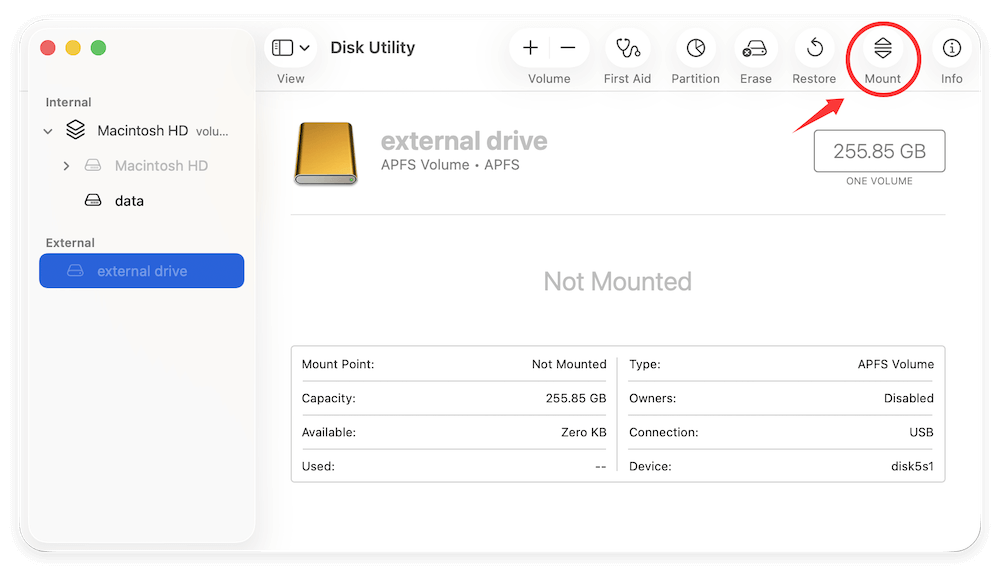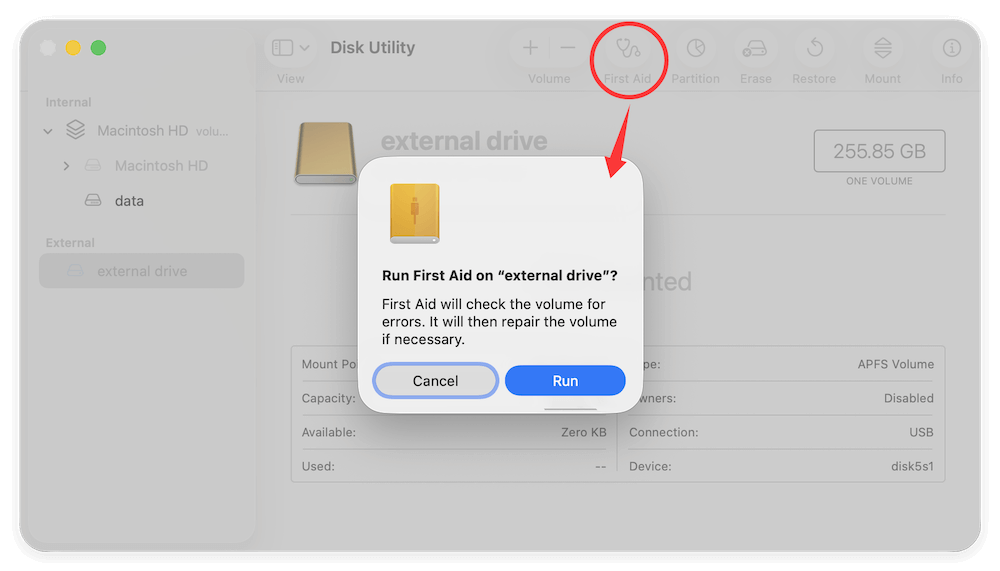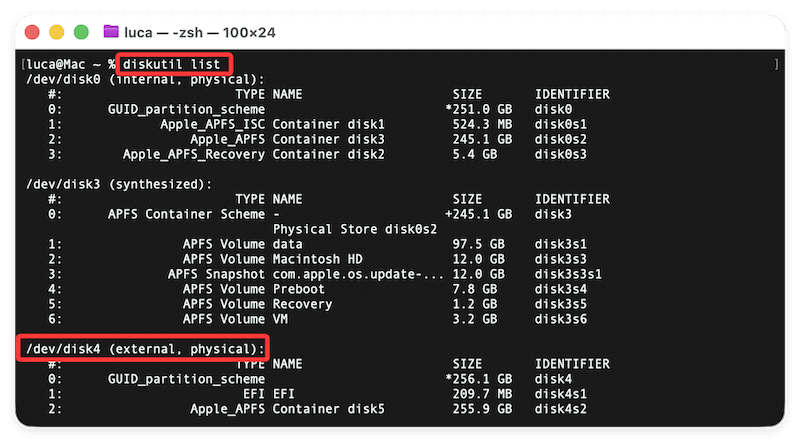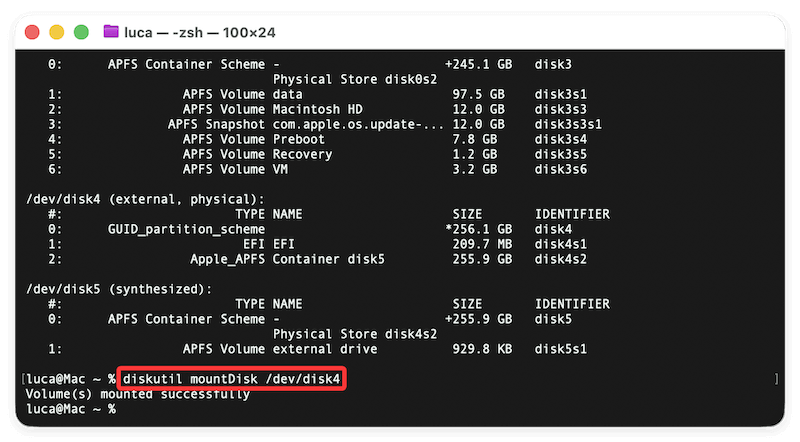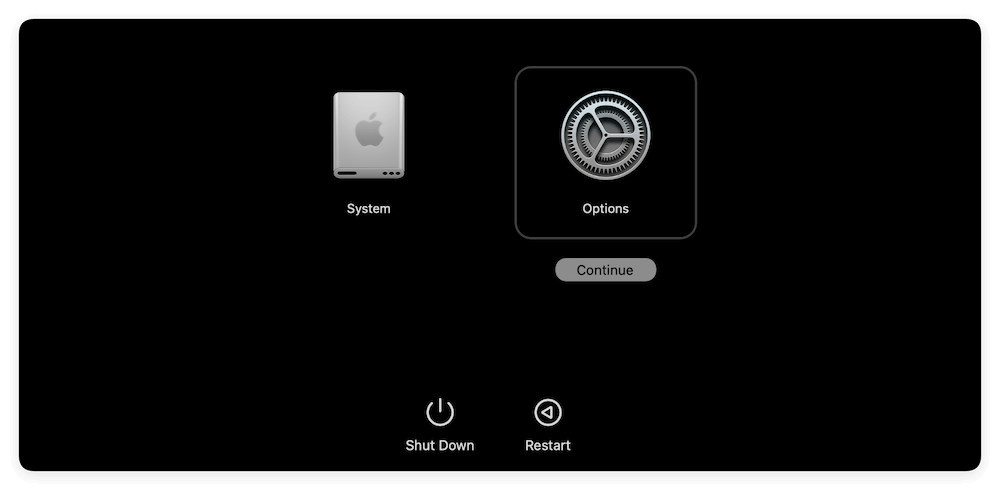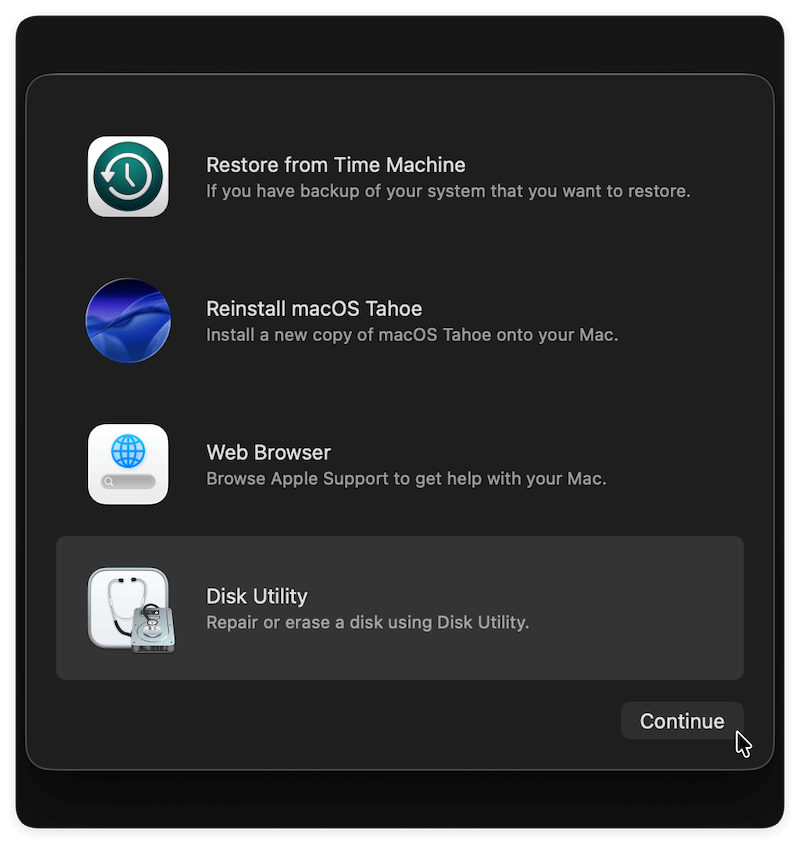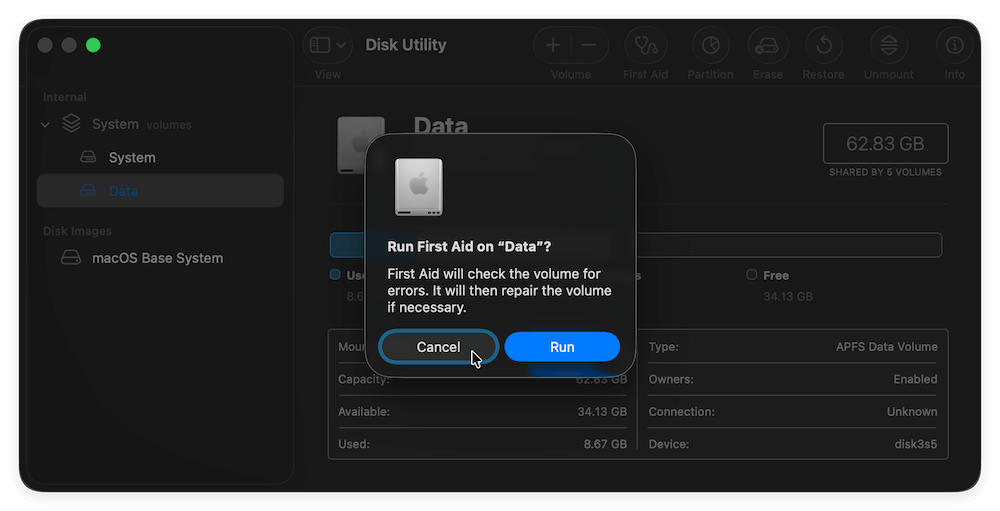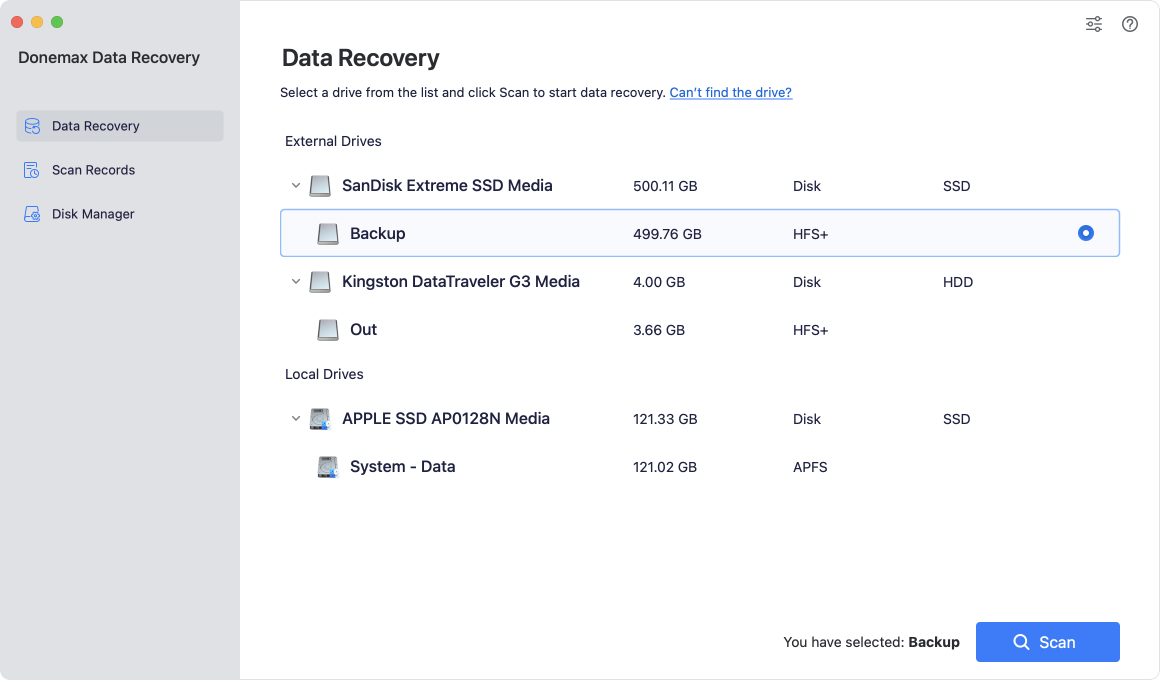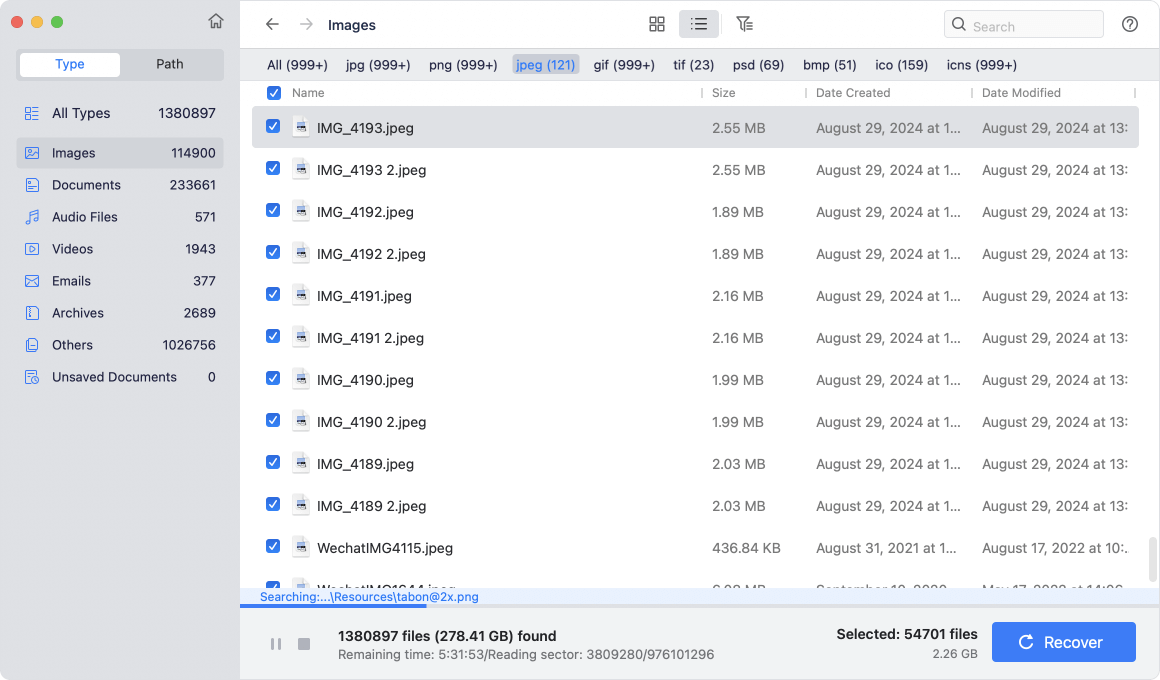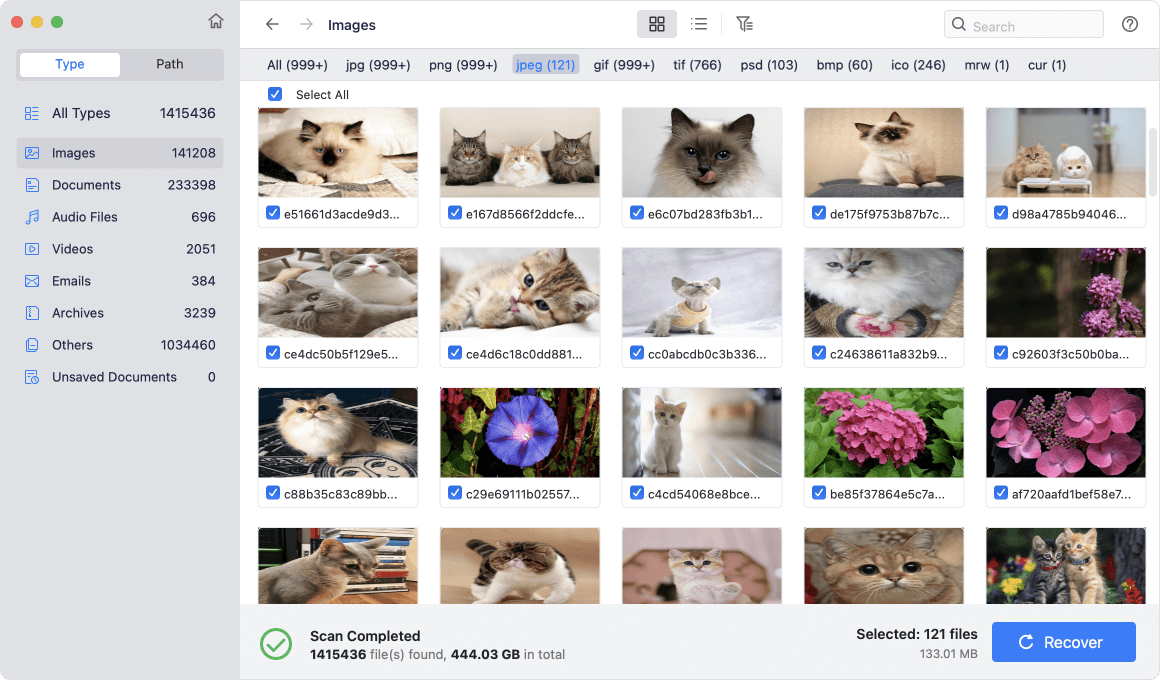Before we start: External hard drive not working on M5 Mac? Check the connection, system settings, hard drive issues and try other solutions in this article to fix the problem. Also, if there are important files on the external hard drive, use Donemax Data Recovery for Mac to recover the files first.
PAGE CONTENT:
External hard drives are vital for Mac users who manage large files, backups, or cross-platform data. However, if your external hard drive isn't working on your M5 Mac, you're not alone. Many users encounter issues where the drive won't show up in Finder, fails to mount, or becomes completely unresponsive after connecting it to a new macOS version like Tahoe or Sequoia.

This guide covers step-by-step troubleshooting methods to fix external hard drive issues on your M5 chip Mac, whether caused by connection problems, formatting errors, or software restrictions.
Why Your External Hard Drive Isn't Working on M5 Mac
When your Mac fails to recognize an external hard drive, the issue could stem from either hardware or software. Before diving into solutions, let's explore some of the most common causes.
1. Connection or Power Issues
A loose or damaged USB-C cable or adapter is one of the most frequent culprits. If you're using a bus-powered hard drive, insufficient power from the port can also prevent it from spinning up properly.
2. macOS Privacy and Security Restrictions
New macOS versions like Tahoe and Sequoia include enhanced security features that restrict external device access. If permissions aren't granted, macOS might silently block or ignore the drive.
3. Incompatible File System Format
Drives formatted in NTFS, EXT4, or ReFS (used by Windows and Linux) often don't work natively on macOS without third-party drivers. macOS can read some of these formats but won't allow writing or mounting in some cases.
4. Outdated macOS or Disk Drivers
Compatibility issues may arise if your system firmware or macOS version isn't updated. Apple frequently rolls out patches to fix USB, Thunderbolt, and file system-related bugs.
5. Disk Corruption or Hardware Failure
If your external hard drive is physically damaged or has bad sectors, macOS may fail to detect it. Clicking or beeping sounds are signs of potential hardware damage.
Preliminary Checks for Not Working External Hard Drive
Before attempting advanced repairs, perform these quick diagnostic checks:
1. Test Another Port or Cable
Try plugging the external drive into a different USB-C or Thunderbolt port. You can also use another cable or a USB-C to USB-A adapter if available.
2. Connect the Drive to Another Device
Test the external hard drive on another Mac or even a Windows PC. If it works elsewhere, the issue lies with your M5 Mac rather than the drive itself.
3. Ensure Sufficient Power Supply
Some larger drives, especially desktop HDDs, require an external power source. Always plug them directly into power or use a powered USB hub.
4. Restart Your Mac
Restarting can refresh USB drivers and resolve temporary detection glitches. After rebooting, reconnect your external drive and wait a few seconds.
Step-by-Step Fixes for External Hard Drive Not Working on M5 Mac
If the preliminary checks didn't help, follow the detailed solutions below.
Fix 1: Check Finder and Desktop Preferences
Sometimes, the drive is recognized but hidden from view.
- Open Finder.
- Go to Finder → Settings (or Preferences) → General tab.
- Make sure External disks is checked under "Show these items on the desktop."
- Then go to the Sidebar tab and enable External disks there too.
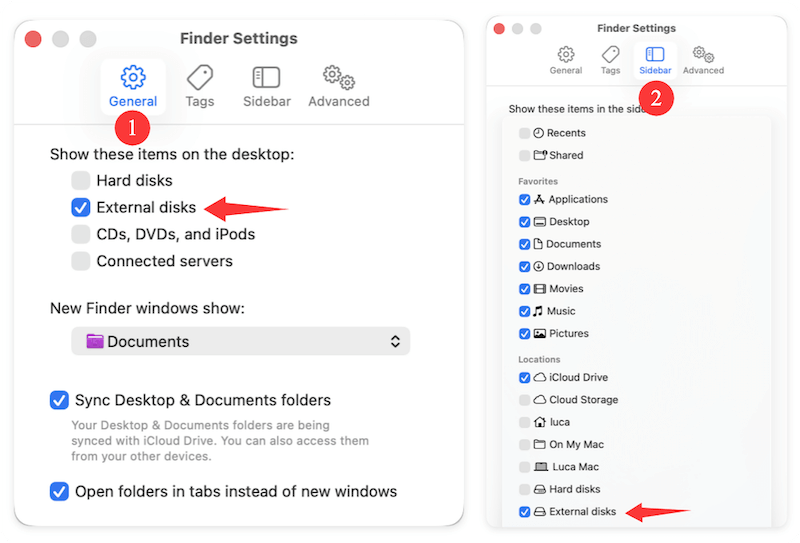
Reconnect your external drive and check if it now appears in Finder or on the desktop.
Fix 2: Check in Disk Utility
If Finder doesn't show your drive, Disk Utility can reveal more information.
- Move to Disk Utility from Utilities via Applications
- Check if the external drive appears in the sidebar (even if grayed out).
- If grayed, select it and click Mount.
![fix external hard drive not working on M5 Mac]()
- If mounting fails, click First Aid to repair disk errors.
![fix external hard drive not working on M5 Mac]()
If Disk Utility can't repair the disk, you may need to back up your data and reformat it (see Fix 6).
Fix 3: Enable External Drive Access in System Settings
macOS security settings can block drive access to apps or the system.
- Go to System Settings → Privacy & Security.
- Scroll down to Full Disk Access.
- Ensure that Finder, Disk Utility, or any third-party disk software has permission enabled.
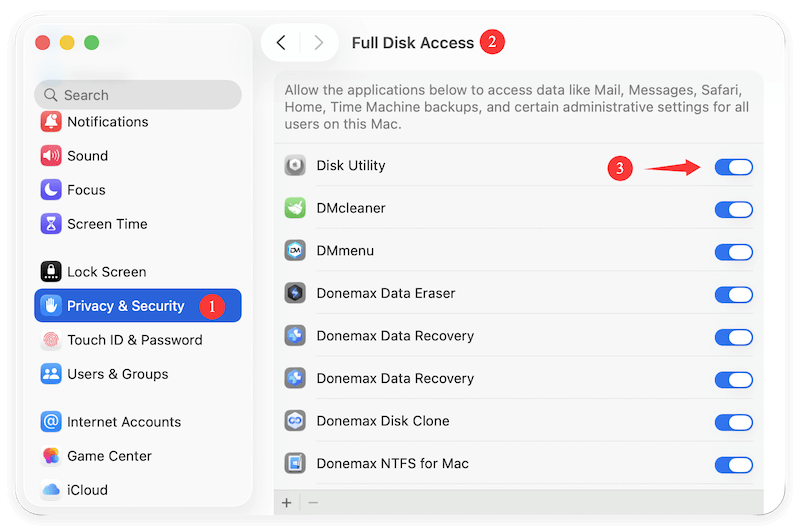
After adjusting permissions, unplug and reconnect your drive.
Fix 4: Reset NVRAM and SMC
Resetting NVRAM and SMC can fix USB controller or disk recognition issues.
For M-series Macs (including M5 Mac):
- Shut down your Mac.
- Press and hold the Power button for 10 seconds until you see the startup options screen.
- Release and restart your Mac normally.
This process resets low-level settings like display, power management, and external connections.
Fix 5: Update macOS and Firmware
Outdated macOS builds may contain bugs that affect USB and file system detection.
- Go to Apple Menu → System Settings → General → Software Update.
- Download and install the latest macOS updates.
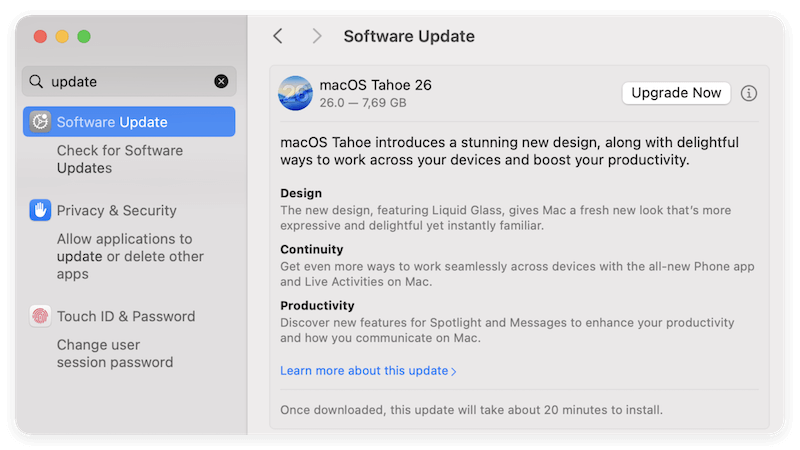
Firmware updates often include fixes for storage controller compatibility, improving external drive performance on M5 Mac devices.
Fix 6: Reformat the External Hard Drive (If Accessible)
If the drive is detected but unreadable, it may have an incompatible or corrupted file system.
Important: Reformatting erases all data. Backup files using another computer if possible.
- Open Disk Utility.
- Select the external drive from the sidebar.
- Click Erase.
- Choose a new format:
- APFS: Best for SSDs used exclusively with macOS.
- Mac OS Extended (Journaled): Suitable for HDDs.
- exFAT: Ideal for drives used between macOS and Windows.
- Click Erase again to reformat the drive.
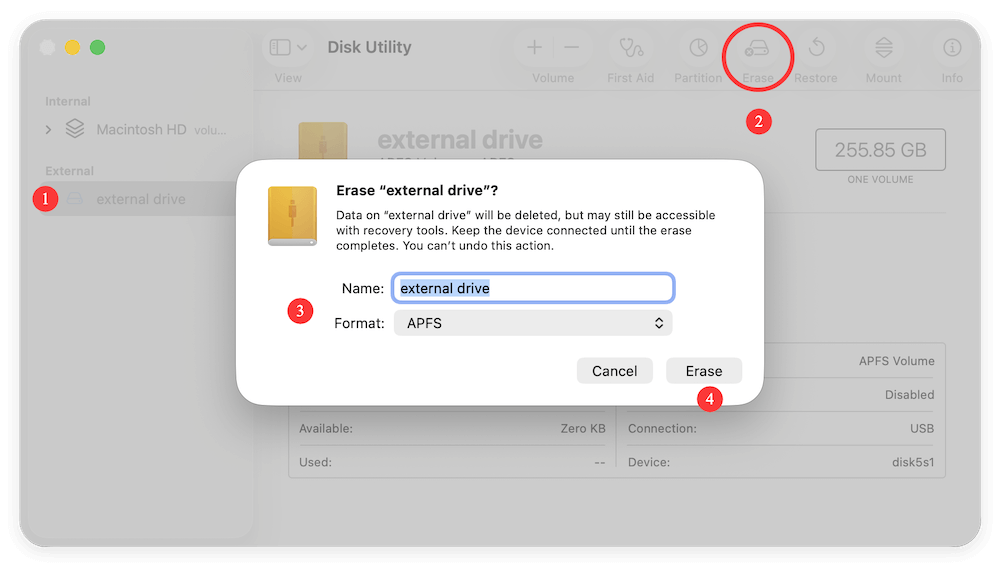
Once complete, eject and reconnect the drive to confirm it mounts properly.
Fix 7: Use Terminal to Manually Mount the Drive
If Disk Utility doesn't mount your drive, Terminal can help.
- Open Terminal from Utilities via Applications.
- Type the following command to list all connected drives:
diskutil list
- Identify your external drive (e.g., /dev/disk2).
![fix external hard drive not working on M5 Mac]()
- Run the command to mount the drive: (Replace /dev/disk4 with your actual disk identifier.)
diskutil mountDisk /dev/disk4
![fix external hard drive not working on M5 Mac]()
- Check Finder or Disk Utility to confirm the drive is now visible.
Fix 8: Install NTFS Drivers for Windows-Formatted Drives
If your drive is NTFS-formatted, macOS may detect it but not not allow writing operations. In other words, you can only read the files from NTFS drive on Mac but cannot add, deleted, modify and other operations.
To fix this, install a compatible NTFS driver:
- Donemax NTFS for Mac
- Tuxera NTFS for Mac
- Mounty for NTFS (Free option)
After installation, restart your Mac and reconnect the drive. Run the software and make the NTFS drive writable on Mac. It should now mount with full read/write access.
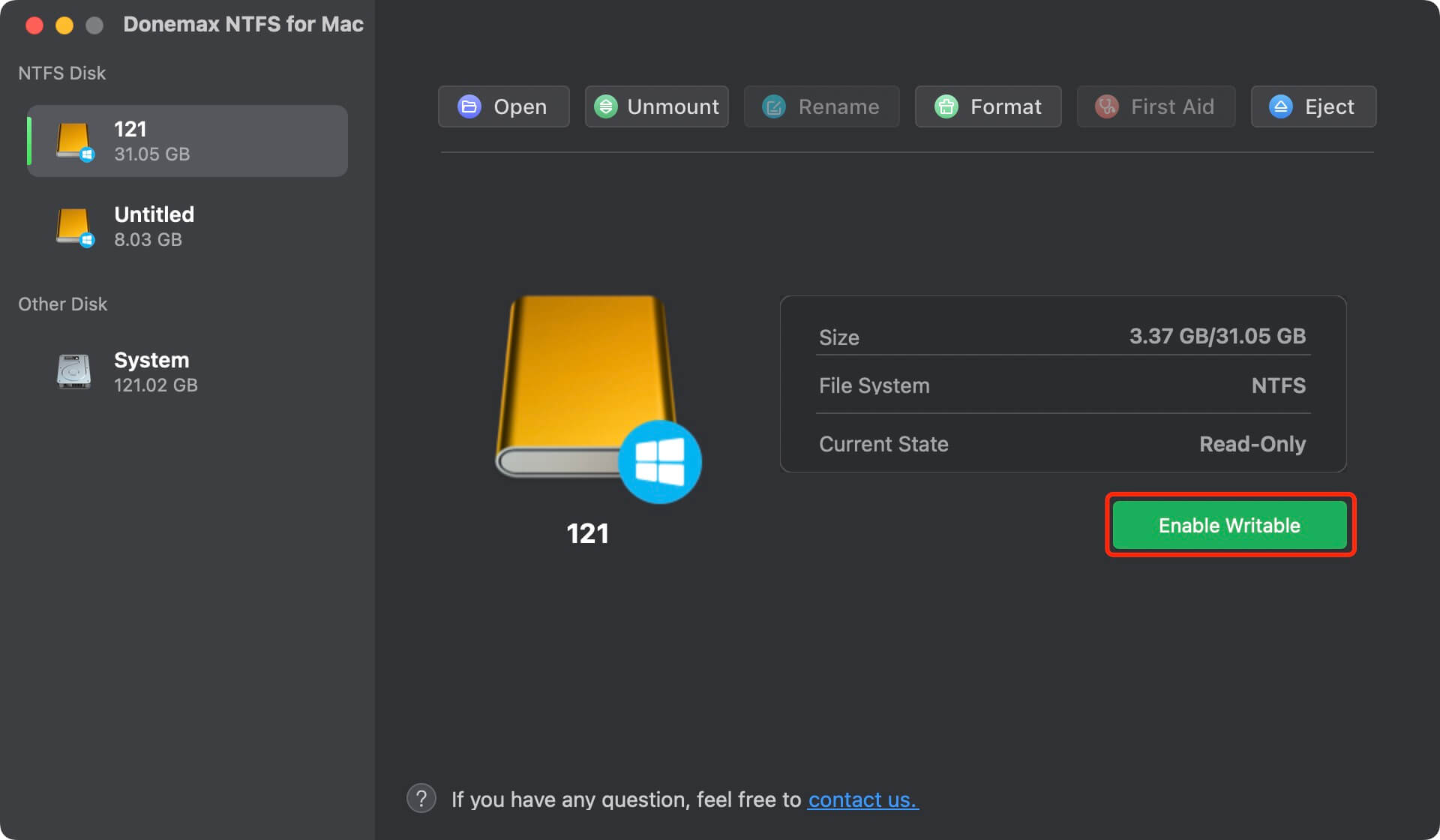
Fix 9: Run First Aid in Recovery Mode
If First Aid didn't work in normal mode, try running it in macOS Recovery.
- Restart your M5 Mac.
- Hold the Power button until startup options appear.
- Select Options → Continue to enter Recovery Mode.
![fix external hard drive not working on M5 Mac]()
- Choose Disk Utility → Continue.
![fix external hard drive not working on M5 Mac]()
- Select the external drive → Click First Aid.
![fix external hard drive not working on M5 Mac]()
- When done, restart the Mac and check if the issue is resolved.
Fix 10: Run Apple Diagnostics
Apple Diagnostics can identify hardware issues related to the USB controller, logic board, or ports.
- Restart your Mac.
- Hold the Power button until startup options appear.
- Press Command + D to start diagnostics.
- Follow on-screen instructions and note any error codes.
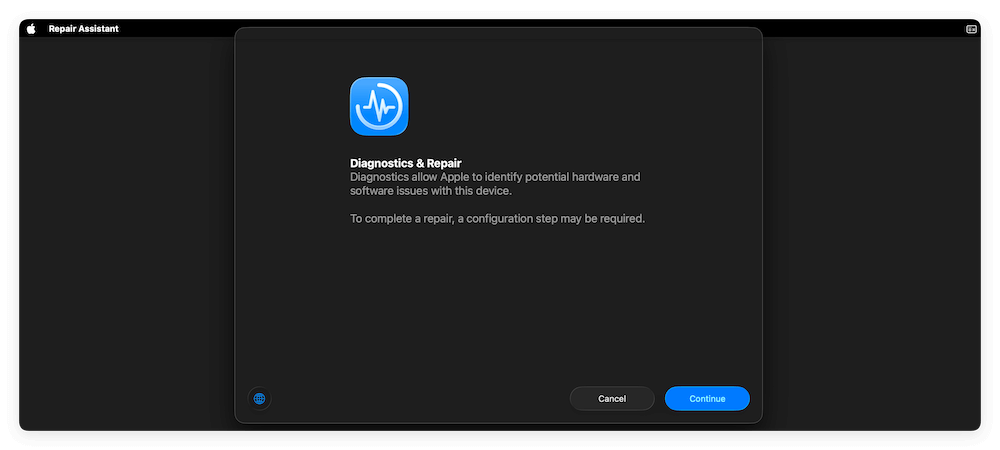
If a hardware issue is detected, you'll likely need professional service or replacement.
Recover Data from an Unrecognized External Hard Drive
If your external hard drive appears in Disk Utility but you can't access files, it's time to use data recovery software.
When to Use Recovery Tools
- Drive is visible but unmountable.
- Files are missing or inaccessible.
- The drive became unreadable after reformatting or corruption.
Recommended Recovery Tool
To recover data from not working external hard drive on M5 Mac, you can use the software Donemax Data Recovery for Mac. The software is compatible with the latest Apple Silicon M5 Macs. Also, it supports the latest version of macOS Tahoe 26.
With the software, you can recover deleted or lost data from external hard drive, internal hard drive, SSD, USB flash drive, or SD card. It supports data recovery for videos, pictures, documents and other files.
Steps to Recover Data
- Download and install the software on your M5 Mac. Launch the recovery tool and select your not working external hard drive.
![fix external hard drive not working on M5 Mac]()
- Click Scan to search for lost or deleted files. The software will deeply scan the external drive to search for the missing files.
![fix external hard drive not working on M5 Mac]()
- Preview recoverable items after the scan process is done. Save recovered files to another safe location (not the same external drive).
![fix external hard drive not working on M5 Mac]()
This approach helps preserve your data even if the original drive becomes corrupted or unstable.
Preventive Tips for External Hard Drive Not Working on M5 Mac
To avoid facing the same issue again, follow these preventive practices:
- Always eject drives safely before unplugging.
- Keep macOS updated to maintain compatibility with external devices.
- Use compatible file systems like exFAT or APFS for better stability.
- Avoid frequent cross-platform switching (Mac ↔ Windows) without reformatting.
- Use powered USB hubs for large or multi-drive setups.
- Back up critical data regularly using Time Machine or cloud storage.
When to Contact Apple or Drive Manufacturer
If none of the fixes work, the problem might be beyond software troubleshooting. Seek professional help if:
- The drive doesn't appear in Disk Utility or Terminal at all.
- It makes clicking, grinding, or beeping sounds.
- macOS repeatedly disconnects it.
- You've verified cables, ports, and permissions but still can't mount the drive.
Contact Apple Support or your drive manufacturer (e.g., Seagate, Western Digital, Samsung) for diagnostics or warranty service.
Conclusion
When your external hard drive isn't working on an M5 Mac, the issue is usually minor—ranging from connection faults to file system incompatibilities. Start with simple checks like trying different cables or enabling Finder visibility, then move to advanced fixes such as resetting the SMC, using Terminal commands, or reformatting the drive.
If the drive remains unrecognized even after all troubleshooting, data recovery tools can help restore your files before seeking hardware repair. Keeping macOS and firmware updated, safely ejecting drives, and maintaining backups will ensure your external drives work smoothly with your M5 Mac for years to come.
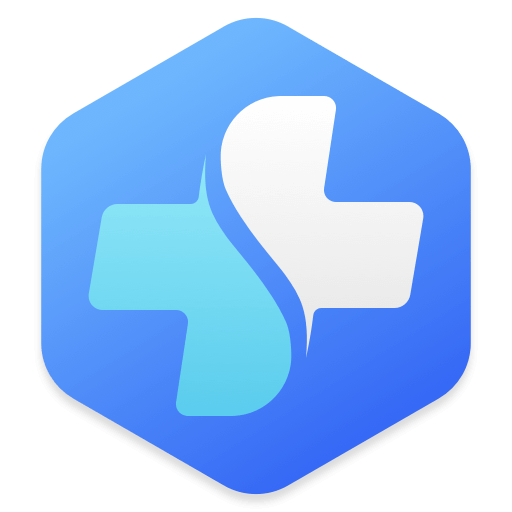

Donemax Data Recovery for Mac
Donemax Data Recovery for Mac is one of the best Mac data recovery software. It is easy-to-use and can help in recovering deleted, formatted, inaccessible or lost data from Mac HDD/SSD, external disk, USB drive, SD card, camera or other storage devices.
Related Articles
- Jun 16, 2025How to Unlock USB Flash Drive?
- Jun 25, 2024Fix LaCie Hard Drive Not Mounting on Mac
- Jul 04, 2024Cannot Format Seagate External Hard Drive on Mac? Fix It Now
- Jul 17, 2023Format A SD Card for Both Windows and Mac OS
- Feb 06, 2024How to Format Lexar Portable SSD for Mac?
- Feb 05, 2025How to Fix Failed Seagate External Hard Drive?

Maria
Maria is one of the senior writers & editors of Donemax who lives and works in Sydney, Australia. She loves PC, Mac and Internet Technology. She has 6 years of writing articles about data recovery on PC/Mac, disk cloning solution, data eraser and computer OS optimization, etc. She is also interested in testing various software and digital products.

Gerhard Chou
In order to effectively solve the problems for our customers, every article and troubleshooting solution published on our website has been strictly tested and practiced. Our editors love researching and using computers and testing software, and are willing to help computer users with their problems

